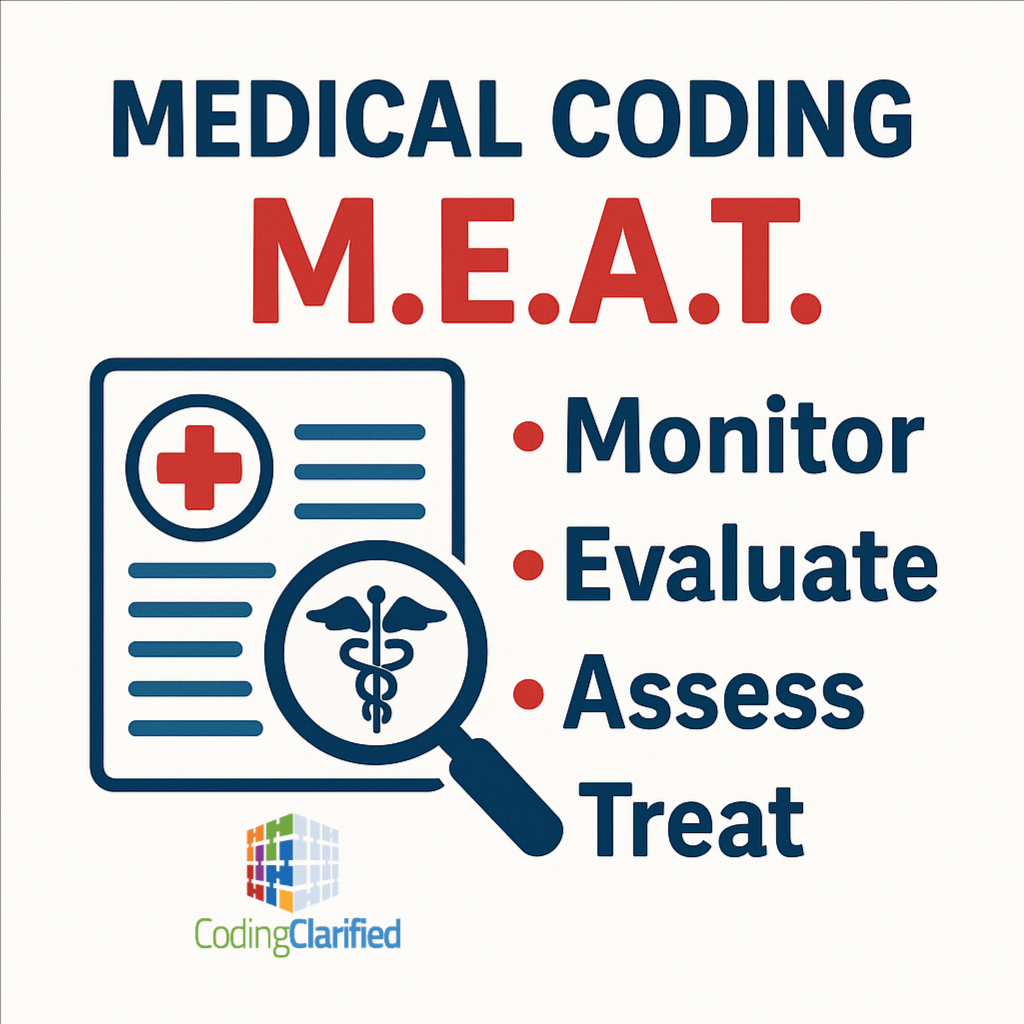MEAT in Medical Coding: Why It Matters
In the world of medical coding and risk adjustment, one acronym stands out as the gold standard for validating diagnoses: MEAT. This simple tool helps coders ensure that each diagnosis is accurate, complete, and supported by provider documentation. Without medical coding MEAT, diagnoses may be questioned, denied, or removed during audits, leading to compliance risks and loss of reimbursement.
What Does MEAT Stand For?
MEAT is an acronym for the four key elements that demonstrate a provider has evaluated and managed a condition during a patient encounter:
-
M – Monitor
Evidence that the provider is keeping track of the condition.
Example: “Check blood pressure daily,” “Lab results reviewed,” “Monitor A1C.” -
E – Evaluate
Notes showing assessment of the condition.
Example: “Blood pressure stable,” “Improved since last visit,” “Worsening neuropathy.” -
A – Assess/Address
Provider actions taken for the condition.
Example: “Increase insulin dosage,” “Referral to cardiology,” “Lifestyle counseling.” -
T – Treat
Active treatment provided or prescribed.
Example: “Prescribed metformin,” “Started physical therapy,” “Provided inhaler.”
Why MEAT Is Important in Coding
-
Validation of Diagnoses
Coders must only code conditions that are supported in the medical record. MEAT provides the necessary proof. -
Risk Adjustment Accuracy
For HCC (Hierarchical Condition Category) coding, diagnoses must meet MEAT criteria to count toward risk scores. -
Audit Readiness
Payers and CMS require documentation to show that diagnoses are being managed. MEAT ensures compliance. -
Quality of Patient Care
Clear documentation benefits not only coders but also the entire healthcare team by improving continuity of care.
Examples of MEAT in Action
-
Hypertension (I10):
Provider note: “Blood pressure 148/92. Continue lisinopril 10mg daily. Will monitor and recheck in 3 months.”-
Monitor: Recheck in 3 months
-
Evaluate: Blood pressure recorded
-
Assess/Address: Continue medication
-
Treat: Lisinopril prescribed
-
-
Diabetes Mellitus Type 2 (E11.9):
Provider note: “Patient’s A1C is 8.2. Increased metformin dosage to 1000mg BID. Ordered repeat labs in 3 months.”-
Monitor: Ordered labs
-
Evaluate: A1C reviewed
-
Assess/Address: Medication adjusted
-
Treat: Prescribed higher metformin dose
-
Key Takeaways
-
Every diagnosis must be backed by MEAT.
-
Coders should look for one or more MEAT elements to validate a diagnosis.
-
If documentation doesn’t meet MEAT, the diagnosis cannot be coded.
-
MEAT is especially critical in HCC risk adjustment coding.

